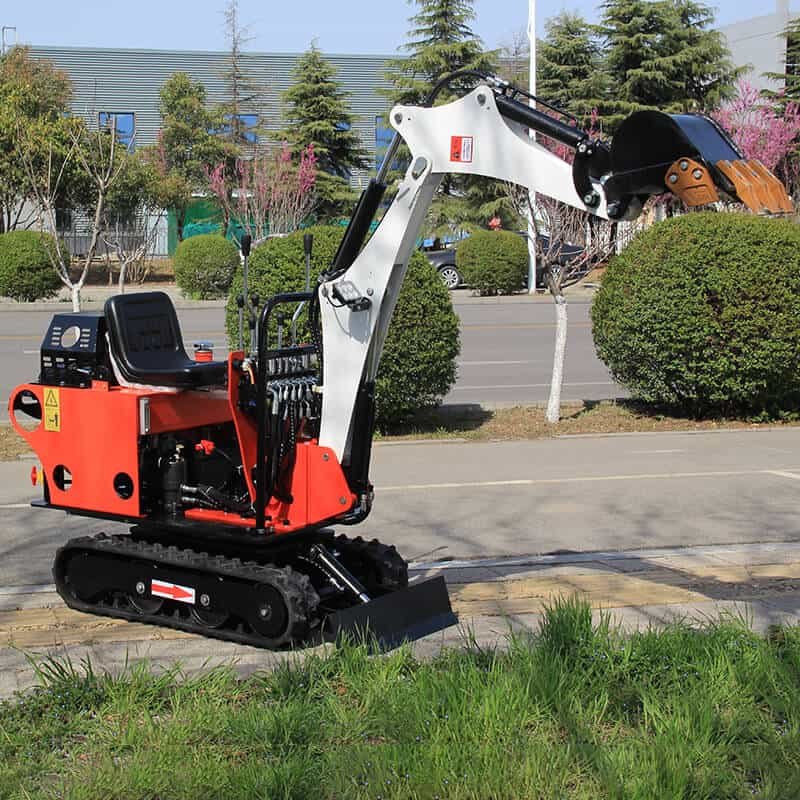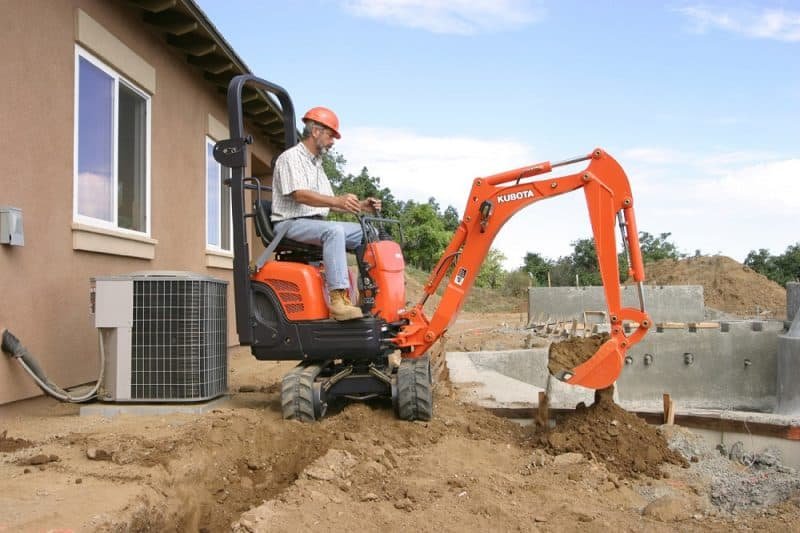Introduction:
In the realm of infrastructure development and maintenance, one cannot overlook the indispensable role played by excavators. These mighty machines, with their power and versatility, have become the backbone of numerous construction projects, transforming landscapes and shaping the world we live in. From roads and bridges to pipelines and buildings, excavators are at the forefront of creating and maintaining the vital infrastructure that supports modern society. In this article, we will delve into the role of excavators in infrastructure development and maintenance. So, let’s strap on our hard hats and embark on this remarkable journey!

Excavators in Construction:
Excavators are the workhorses of construction projects, providing the muscle and precision required for various tasks. Here are some key roles excavators play in infrastructure development:
- Earthwork and Excavation: Excavators excel at excavating and moving vast amounts of earth, whether it’s digging trenches for foundations, creating building pads, or shaping terrain for landscaping purposes. Their powerful buckets and hydraulic systems enable efficient and precise excavation, saving time and labor.
- Foundation Preparation: Excavators are instrumental in preparing foundations for structures. They remove unwanted materials, level the ground, and create stable surfaces for the construction of buildings, bridges, and other infrastructure elements.
- Utility Installations: Excavators are crucial in installing underground utilities, such as water and sewer pipelines, electrical conduits, and communication cables. They dig trenches with precision, ensuring proper placement and alignment of these vital infrastructure components.
Real-life example: Imagine a construction project where a new commercial building is being erected. Excavators are responsible for clearing the site, excavating the foundation, and preparing the ground for the construction team. They dig trenches for utilities like water and sewer lines, ensuring the smooth flow of essential services to the building.

Excavators in Road Construction and Maintenance:
Road infrastructure is vital for transportation and connectivity. Excavators play a pivotal role in building and maintaining our road networks:
- Road Excavation and Grading: Excavators are used to remove existing road surfaces, excavate ditches and embankments, and level the ground for road construction. Their precise control allows for accurate grading, ensuring proper road drainage and stability.
- Culvert and Bridge Construction: Excavators are employed in the construction of culverts and bridges, excavating foundations and creating stable footings for these structures. They are also used to place precast concrete elements and facilitate bridge maintenance and repairs.
- Road Maintenance and Repair: Excavators are vital in road maintenance activities, such as pothole repair, shoulder grading, and slope stabilization. They are equipped with attachments like hydraulic breakers or milling machines for asphalt and concrete removal.
Real-life example: Picture a road expansion project where an excavator is used to remove the existing pavement, excavate the widened roadbed, and grade the surface to the required specifications. Later, the same excavator is employed to install culverts under the road and assist in repairing damaged sections.
Excavators in Pipeline and Utility Maintenance:
Excavators play a crucial role in maintaining and repairing underground pipelines and utilities that ensure the continuous flow of essential resources:
- Pipeline Maintenance: Excavators are used to expose and repair underground pipelines, whether it’s water, gas, or oil. They dig trenches alongside the pipelines, allowing access for inspection, maintenance, and replacement activities.
- Utility Repairs: In case of utility failures or damages, excavators assist in excavating the affected areas for repairs or replacements. They remove the damaged sections, install new components, and backfill the trenches once the work is completed.
Real-life example: Consider a situation where a gas pipeline has developed a leak. Excavators are brought in to dig trenches alongside the pipeline, exposing the affected section. Once the damaged portion is identified, the excavator assists in removing the damaged pipe and installing a new one. After the repair is complete, the excavator carefully backfills the trench, ensuring proper compaction to restore the pipeline’s integrity.

Excavators in Demolition and Reconstruction
Excavators are vital in the demolition and reconstruction process, enabling the transformation of existing infrastructure:
- Demolition: Excavators equipped with specialized attachments, such as hydraulic breakers or shears, play a central role in demolishing structures. They efficiently dismantle buildings, bridges, and other infrastructure elements, making way for new developments.
- Reconstruction: Excavators are involved in clearing and removing debris from demolition sites. They assist in excavation and site preparation for the construction of new structures, facilitating the reconstruction process.
Real-life example: Imagine an urban redevelopment project where an old, dilapidated building is being demolished to make way for a modern commercial complex. Excavators meticulously dismantle the structure, ensuring the safe removal of materials and clearing the site for the new construction.
Excavators in Landscaping and Environmental Projects:
Excavators contribute to landscaping and environmental projects, creating aesthetically pleasing and sustainable environments:
- Landscaping: Excavators are utilized in grading and shaping landscapes, creating features like ponds, terraces, and retaining walls. They assist in clearing vegetation, preparing soil, and creating contours that enhance the overall aesthetics of parks, gardens, and recreational areas.
- Environmental Restoration: Excavators play a role in environmental restoration projects, such as wetland rehabilitation or riverbank stabilization. They assist in reshaping landforms, creating habitats, and implementing erosion control measures.
Real-life example: Consider a project aimed at transforming a barren piece of land into a community park. Excavators are used to clear the area, level the ground, and create ponds and gentle slopes. They shape the landscape, making it conducive to the growth of vegetation, and contributing to the overall beauty and functionality of the park.

Advanced Technologies and Innovations in Excavators:
Excavators have embraced technological advancements, leading to increased efficiency, productivity, and safety. Here are some notable technologies and innovations in excavators:
- GPS and Machine Control Systems: Excavators equipped with GPS technology and machine control systems offer precise positioning, enabling accurate excavation and grading. These systems provide real-time data, allowing operators to work with enhanced precision and reducing the need for manual measurement and marking.
- Telematics and Remote Monitoring: Excavators now feature telematics systems that gather and transmit data about machine performance, fuel consumption, and maintenance needs. This information enables proactive maintenance planning, optimizing machine uptime, and minimizing costly breakdowns.
- Hybrid and Electric Excavators: As the world shifts towards greener practices, hybrid, and electric excavators are gaining popularity. These machines reduce fuel consumption, emissions, and noise levels while maintaining comparable performance to traditional diesel-powered excavators. They are ideal for urban areas or environmentally sensitive projects.
- Improved Operator Comfort and Safety Features: Excavators now come equipped with ergonomic operator cabins, featuring adjustable seats, climate control, and enhanced visibility. Safety features like rear-view cameras, proximity sensors, and object detection systems contribute to operator comfort and minimize the risk of accidents.
Real-life example: In a large-scale construction project, an excavator with GPS and machine control systems is used to dig precise trenches for the installation of underground utilities. The operator receives real-time data on the cabin display, ensuring accurate digging depths and alignments. Meanwhile, the telematics system alerts the maintenance team about upcoming service needs, optimizing the excavator’s performance and minimizing downtime.

Conclusion:
Excavators are undoubtedly the backbone of infrastructure development and maintenance. Their power, versatility, and precise control make them indispensable in a wide range of projects, from construction and road development to pipeline maintenance and environmental restoration. As we marvel at the impressive infrastructure around us, let us not forget the crucial role played by these remarkable machines in shaping the world we live in and ensuring the continued growth and progress of our society. If you want to know more, or you want to buy excavators, please contact us.

